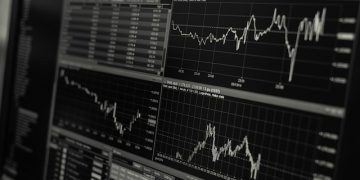Feb 18 (Reuters) – Asian markets were set for sideways trade at Thursday’s open as lingering pandemic concerns pushed against stronger economic data, and with little firm direction from Wall Street.
Australia’s benchmark S&P/ASX 200 index was down 0.1% in early trading, while Japan’s Nikkei 225 futures were up 0.05%. Hong Kong’s Hang Seng index futures were down 0.2%.
The MSCI’s global stock index was up 0.04%.
Strong retail sales out of the United States, coupled with new indications the Federal Reserve will maintain its accommodative stance and an ongoing push for further U.S. stimulus, helped drive expectations the world’s largest economy will continue to post gains coming out of the pandemic.
But concern at the rapid spread of new variants tempered enthusiasm.
“With an even larger stimulus package likely to be passed by Congress before the end of March, the U.S. economic recovery could gain more momentum in 2021,” wrote Commonwealth Bank of Australia currency analyst Carol Kong.
“Despite the recent positive vaccine developments, the global economic outlook remains uncertain partly because of the spreading virus variants.”
On Wall Street, technology stocks faced some pressure on inflation concerns, driving down the Nasdaq while other companies rose on broader economic optimism.
The Dow Jones Industrial Average rose 0.29%, while the S&P 500 lost 0.03% and the Nasdaq Composite dropped 0.58%.
But while investors eyed inflation, minutes from the January Fed meeting showed policymakers willing to push further accommodation to boost the pandemic-scarred U.S. economy.
Persistent optimism spread to the U.S. dollar, which rose against other currencies. The dollar index, a measure of the currency’s strength against six other major currencies was last 0.25% higher.
The risk-on appetite was also apparent in bitcoin, which continued its upward march to exceed $52,000 amid signs it may be gaining more mainstream acceptance.
An ongoing deep freeze in Texas continued to drive up oil prices, as the unusually cold weather hampered output at the largest U.S. crude producing state. Brent crude gained 1.6%, while U.S. West Texas Intermediate (WTI) crude settled up 1.8%, both levels not seen since January 2020.
Safe-haven U.S. Treasury yields were down slightly Wednesday amid the stronger economic data. The benchmark 10-year yield , which touched 1.333%, its highest level since Feb. 27, 2020, later dropped to 1.2720%. The 30-year U.S. yield also dropped.
Spot gold edged 0.2% lower to $1,815.80 per ounce pressured by higher benchmark U.S. Treasury yields. U.S. gold futures fell 0.4% to $1,815.70 per ounce.
Reporting by Pete Schroeder; editing by Richard Pullin




